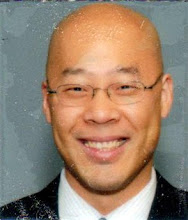From Above the Law's "Notes from the Breadline" column comes this account of doc review life:
After five minutes, I am reasonably certain that the receptionist's beverage offer has been rescinded. After twenty minutes, Elisa appears in the reception area. Although there is no one chasing her, she looks harried, as though she was pursued from her office by a pack of foxhounds. She also sounds cranky. "I'm Elisa," she says, barely looking up from her BlackBerry. "I don't know why they told you to ask for the partner," she scoffs derisively. "I'm handling the document review." She turns around and starts to walk away. Though she has neglected to use one of the common expressions indicating as much, such as "Come with me" or "Right this way," I deduce that I am supposed to follow her.
I can tell that Elisa is younger than I am, but it takes me a moment to realize just how much younger she is. She has a hardness that makes her seem older, and her clothes -- while clearly expensive -- look as though they were picked out by her overly conservative grandmother. She also appears oddly mismatched, like her features were gathered from a collection of spare parts. Her lips are thin and fixed in a sour expression, which feels oddly familiar to me, although I can't quite place it. When we stop to wait for an elevator, another female associate, who is young and pretty, wanders up and stands silently nearby. Elisa looks her over with a disgusted glance, and it hits me: Elisa resembles Dick Cheney.
We get off the elevator and I follow her into the warren-like hallway. "Actually," she continues seamlessly, as though we had been talking the entire time, "I'm basically handling this entire case. I'm, like, unbelievably busy. And we've had one problem after another with these temp attorneys, so it's been, like, such a nightmare." She sighs irritably. "I had to fire one last week because he was, like, totally incompetent."
"How so?" I ask, hoping to learn how not to cross Elisa. But she looks at me strangely, and I realize that we are not having a conversation; Elisa is just thinking out loud. She shifts gears. "Have you done document reviews before? You've done document reviews before, right?" she says. It is more of a command than a question. "Because they told me that you had experience doing document reviews, and I really don't have time to hold anyone's hand."
Something about her severity makes me want to compensate, to offset her total lack of geniality. "So, Elisa," I ask her in the singsong tone I might use with a shy puppy, "it sounds like you're running the show here. Can you tell me about the case?" I expect her to seize the opportunity to show off her expertise, delight in the details she has mastered, display the familiarity that most overly-involved associates flaunt with pride. Instead, she grunts impatiently. "I'll give you a binder that explains the coding," she says. "You don't really need to know more than that."
Finally, we arrive at a closed door. Elisa opens it, revealing a windowless room filled with computer screens. Most of them are manned by attorneys, some of whom spin around, blinking dazedly at the interruption. Others appear catatonic, registering no response. I almost expect someone to shout "Close the door!" like the old patrons on Cheers did when reality threatened to penetrate their cocoon. No one does. They are docile and glassy-eyed, and turn back to their screens before I finish saying "hello."
"Okay," Elisa says brusquely, grabbing a binder from a stack in the corner. "This is the review protocol. You're going to be tagging for these 32 categories. Read through it, and if you have any questions after that, you can e-mail me." She scrawls her e-mail address on a piece of paper. "You know how to use Kroll Ontrack, right?" I do, but I'm not sure I would admit it if I didn't. "It's been a while," I say. "Do you want to just do a quick run-through?"
Elisa exhales wearily, making a sharp hissing sound that causes me to cringe involuntarily. Clearly, she does not want to do a quick run-through. Nonetheless, she plops down at an open computer and clicks into the database, whizzing through its features so quickly that I realize I will have to look through it on my own later, when I have time to reacquaint myself with the "review tool," as she calls it. While Elisa zips through the program, I study the room and its occupants.
...
Elisa finishes her lightning review and stands up abruptly. "Okay," she says. "All set?" It doesn't sounds like a question, but I nod anyway. She turns to leave, but spins around just before she reaches the door. "Don't redact anything yet," she says sternly. "If you find something that needs to be redacted, put it aside and let me know. I don't want you to redact anything until I see how you're doing with the review."
"Got it," I say. "Thanks." She closes the door, and I sense a collective sigh of relief. No one says anything. After a few minutes, an older man, who is wearing carpal tunnel braces on both wrists, looks at the door, as if to make sure that Elisa is gone.
"Bitch," he mutters, and turns back to his computer.
The Stud has been fortunate not to have had quite the same experience. However, while the staff at the firm the Stud is occasionally placed at has been, for the most part, pleasant to work with and for, there are far fewer projects in Los Angeles than in New York, whence "Notes from the Breadline" hails.
Ah, doc review life.

